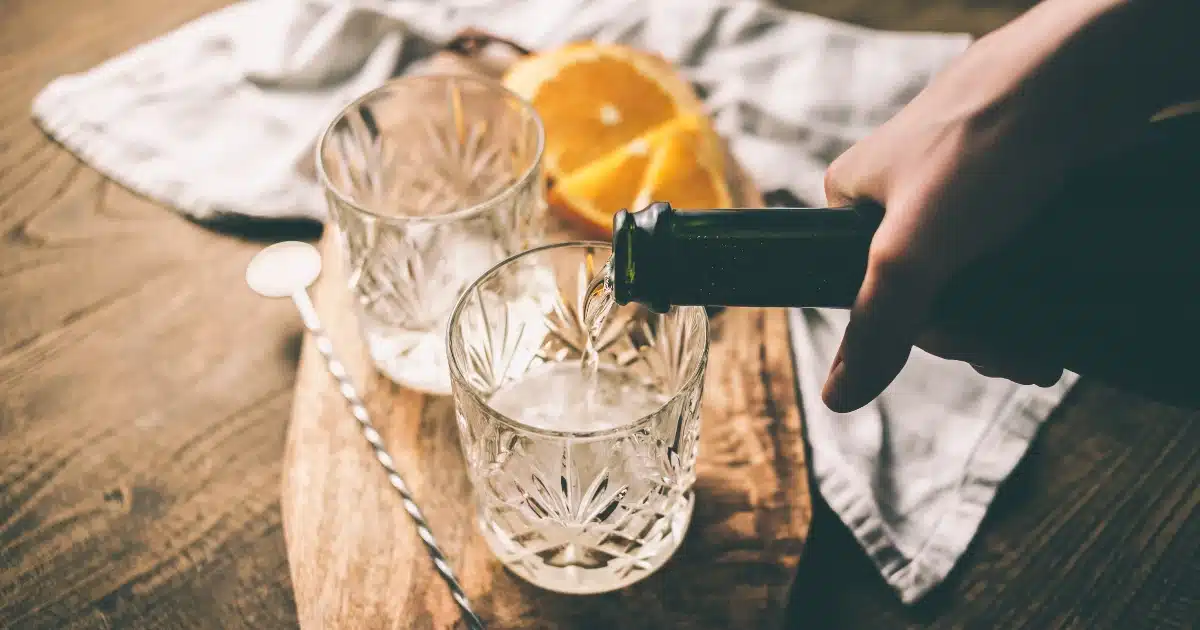VIEW OUR RANGE OF GIN HAMPERS TODAY

Mother’s Ruin Gin…’Opium of the people’.
Countless books in gin history reference Mothers Ruin but the reason why gin gets this nickname differs depending who you ask. As a family-run small batch gin brand, we wanted to explore this history and answer the question, why was gin nicknamed ‘Mother’s Ruin’?
Who doesn’t love a gin hamper? The perfect gifts for drinkers of gin, our hampers rise to any occasion – from birthdays to anniversaries, congratulations to new homes, Christmas or just to say thank you. Discover our range of luxury gin hampers here.
Gin wasn’t always Britain’s favourite tipple. The nation was partial to brandy for a long time, importing vast quantities of French brandy during the early to mid-1600s. People started to wake up to the wonders of gin in 1689, when Prince William of Orange took over the British throne.
The public were allowed to produce gin in their own home providing they passed a 10-day public notice. Between 1720 and 1757, thousands of distilleries began to emerge all over England. This infectious ‘Gin Craze’ was thanks to a new act titled the Mutiny Act, which specified that if you were distilling alcohol in your home, you wouldn’t be asked to house soldiers.
Back then, gin was made with grape rather than grain – a tradition that we at Sing Gin keep alive. Our grape-based gin is a nod to the past! Can we tempt you to try it while you’re here?
By 1730, gin was cheap and easily accessible to the masses. London gin production had reached 10 million gallons, and there were over 7,000 gin shops. The peak was in 1743, when the average person consumed 14 gallons of gin every year!
The ‘Gin Craze’ led to the nickname ‘Opium of the people’ after a rise in crime, death rates and prostitution.
Despite this, England could not get enough of the juniper-based spirit. Extreme measures were taken to get hold of it, such as selling children, furnishings and even pawning off family members!
The government intervened and decided to increase the tax rate on gin to reduce consumption. The Gin Act was introduced in 1736. It prevented the public selling distilled spirits, unless they purchased a licence costing £50 (the equivalent of £100,000 today). This forced the sale of gin underground, putting reputable sellers out of business and causing a rise in bootleggers. Only three licences were acquired to sell gin between 1736 and 1743!
As more women became hooked on gin between 1720 and 1757, this led to the mistreatment of their children and a rise in prostitution. Women became more addicted to gin than their male counterparts – gaining the juniper-based spirit the nickname ‘Mother’s Ruin’.
May we take this opportunity to remind all of you to drink responsibly?
A new Gin Act was introduced which prevented the distillers, grocers and bakers selling gin. At the same time, poor grain harvests increased the price of grain and food, which combined with the new restrictions, meant gin was suddenly not so affordable.
1757 marked the end of the ‘Gin Craze’, with a significant decline in consumption of gin and the hard-to-knock label ‘Mother’s Ruin’.
So thats how gin got its rather unflattering nickname. Did you learn something new here? If so, please share this post with your friends!
You can follow us on Facebook, Instagram, Twitter and Pinterest for more gin trivia and subscribe to our newsletter for updates from our Yorkshire distillery and exclusive Sing Gin Sippers discounts.
Enjoying a Sing Gin at home? Tag us in your gin creations and we’ll repost the best shots in our Instagram Sing Gin Sippers series!